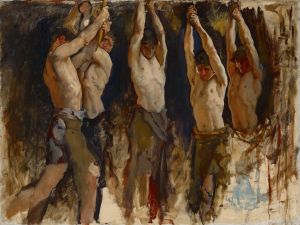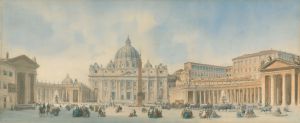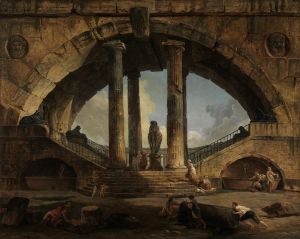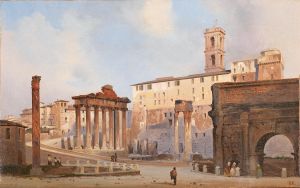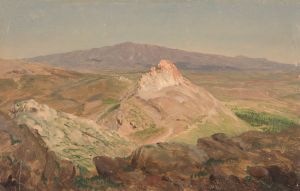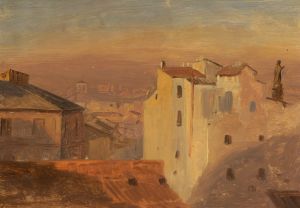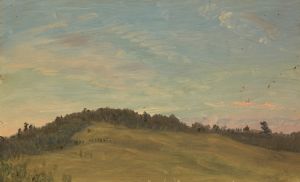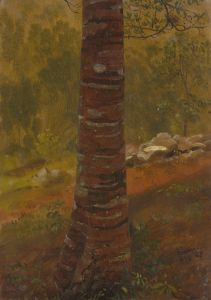
The Parthenon from the Southeast
A hand-painted replica of Frederic Edwin Church’s masterpiece The Parthenon from the Southeast, meticulously crafted by professional artists to capture the true essence of the original. Each piece is created with museum-quality canvas and rare mineral pigments, carefully painted by experienced artists with delicate brushstrokes and rich, layered colors to perfectly recreate the texture of the original artwork. Unlike machine-printed reproductions, this hand-painted version brings the painting to life, infused with the artist’s emotions and skill in every stroke. Whether for personal collection or home decoration, it instantly elevates the artistic atmosphere of any space.
"The Parthenon from the Southeast" is a painting by the American landscape artist Frederic Edwin Church, completed in 1871. Church was a central figure in the Hudson River School, a mid-19th century American art movement known for its detailed, romanticized portrayals of the American landscape. However, this particular work diverges from his usual American subjects, focusing instead on one of the most iconic structures of ancient Greece.
The painting depicts the Parthenon, a former temple on the Athenian Acropolis, dedicated to the goddess Athena, whom the people of Athens considered their patroness. The Parthenon is one of the most significant cultural monuments of ancient Greece and is renowned for its architectural and historical importance. Church's rendering of the Parthenon captures the structure from the southeast, offering a perspective that highlights the grandeur and symmetry of the ancient edifice.
Frederic Edwin Church traveled extensively throughout his career, and his journey to Greece in 1869 provided the inspiration for this painting. His travels were part of a broader trend among American artists and intellectuals of the time, who sought to connect with the classical heritage of Europe and the Near East. Church's visit to the Parthenon allowed him to study the ruins firsthand, and he made numerous sketches and studies that would later inform his finished work.
In "The Parthenon from the Southeast," Church employs his characteristic attention to detail and dramatic use of light. The painting captures the Parthenon bathed in the warm glow of the setting sun, which enhances the golden hues of the ancient marble and casts long shadows that emphasize the structure's architectural features. The surrounding landscape is rendered with equal care, showing the rugged terrain of the Acropolis and the distant hills of Athens.
The painting is notable for its combination of realism and idealism. While Church's depiction of the Parthenon is meticulously accurate, he also imbues the scene with a sense of timeless beauty and reverence. This duality reflects the broader aims of the Hudson River School, which sought to convey both the factual and the sublime aspects of nature and human achievement.
"The Parthenon from the Southeast" is part of the collection of The Metropolitan Museum of Art in New York City. It was acquired by the museum in 1920 and has since been a significant piece in their American paintings collection. The painting is celebrated not only for its artistic merit but also for its historical significance, as it represents a moment when American artists were increasingly looking beyond their own borders for inspiration.
Frederic Edwin Church's work remains influential, and "The Parthenon from the Southeast" is a testament to his skill in capturing the essence of his subjects, whether they be the natural landscapes of the Americas or the ancient ruins of Greece. The painting continues to be admired for its technical excellence and its evocative portrayal of one of the world's most famous architectural landmarks.





